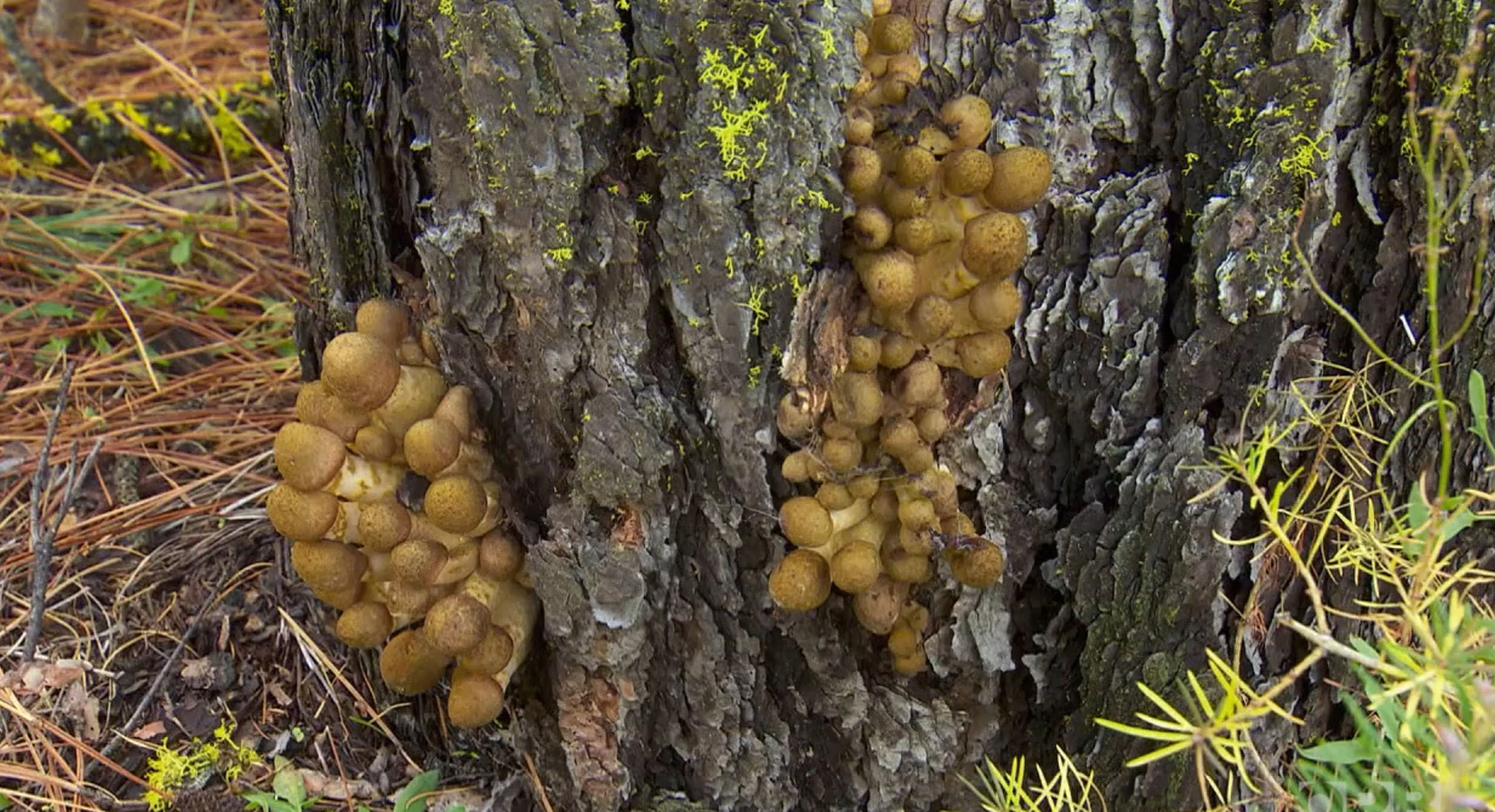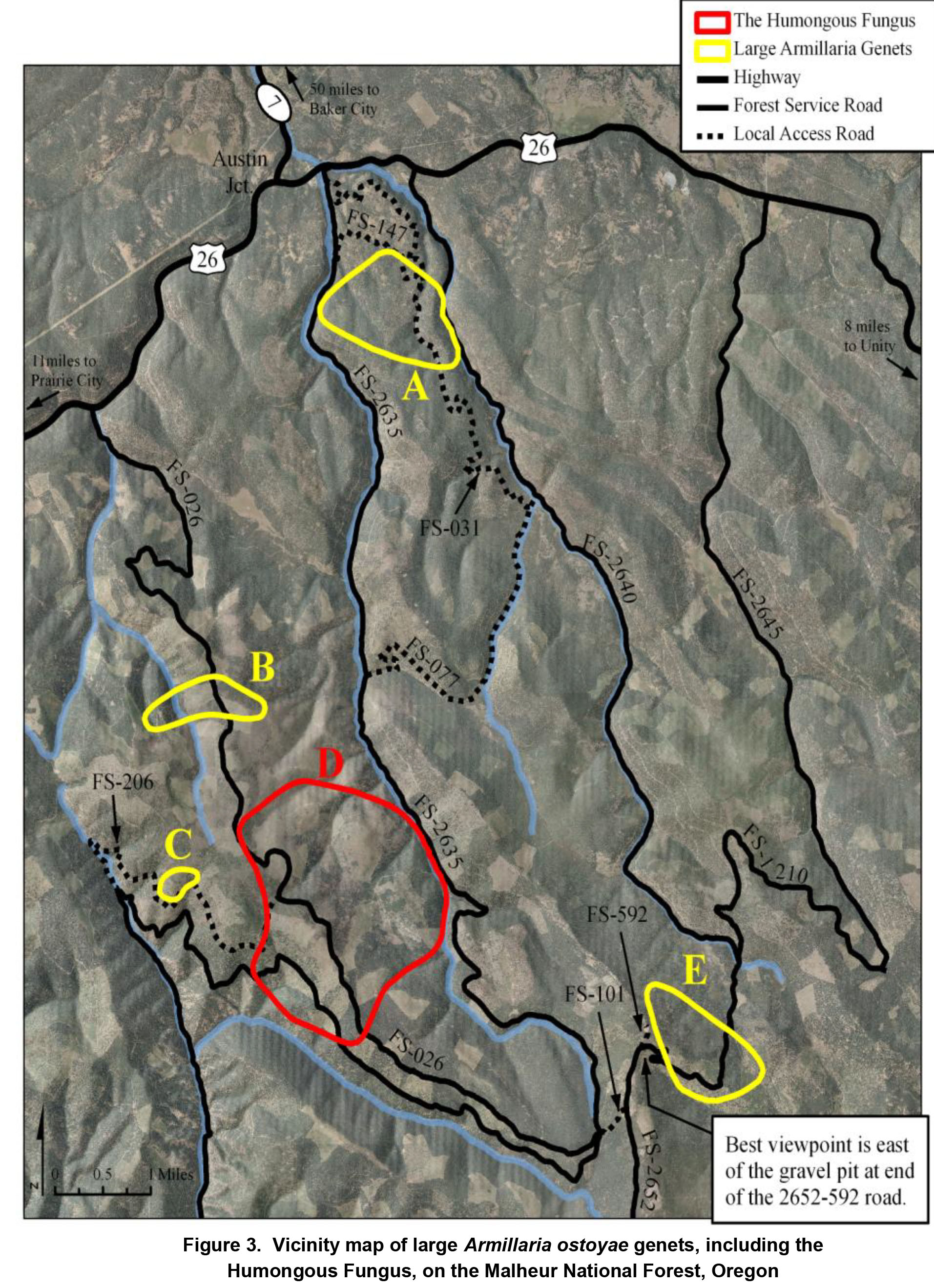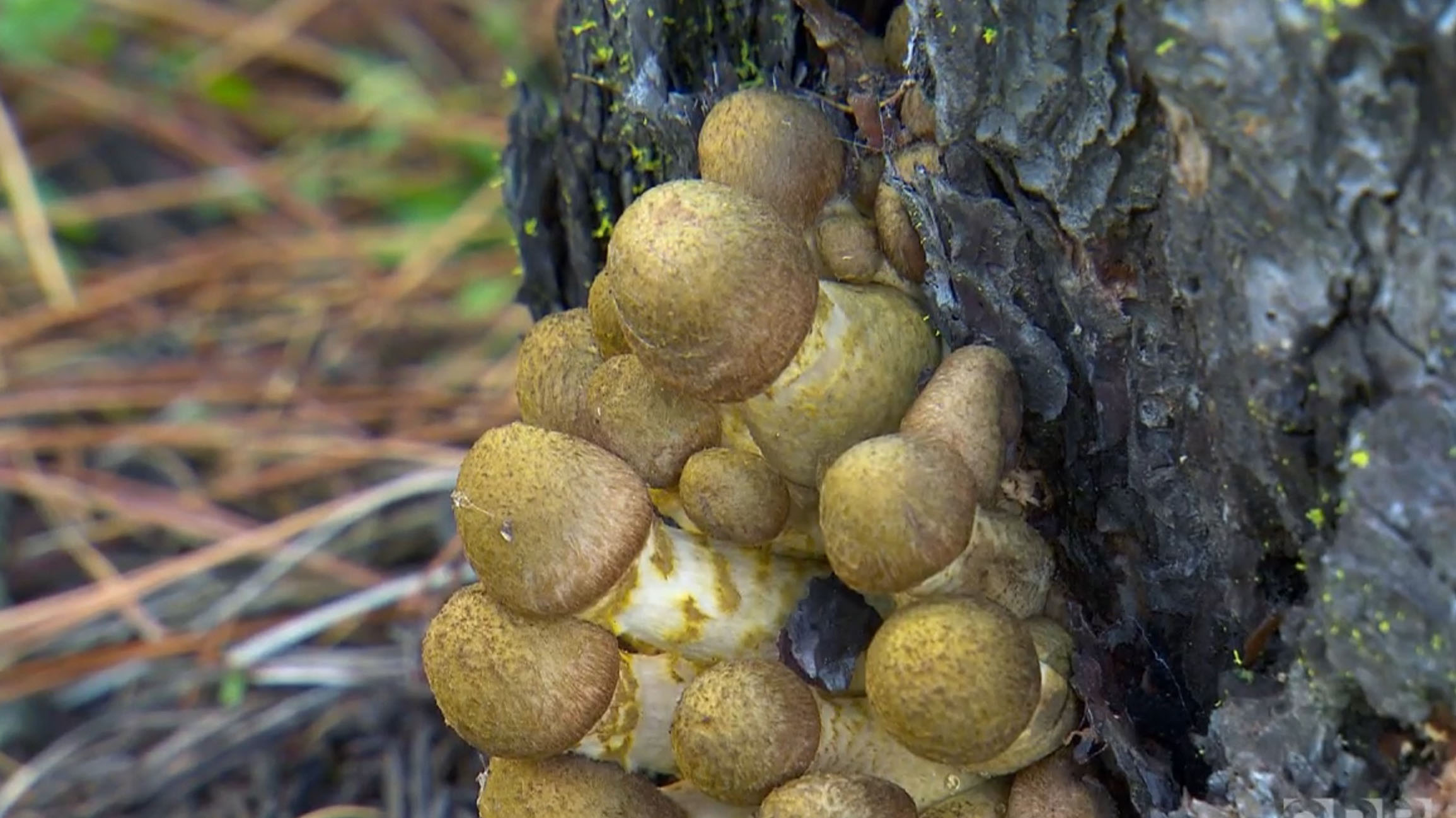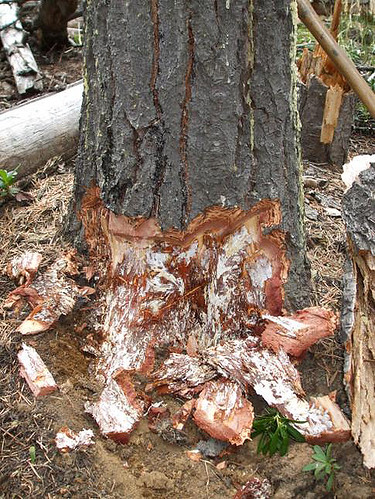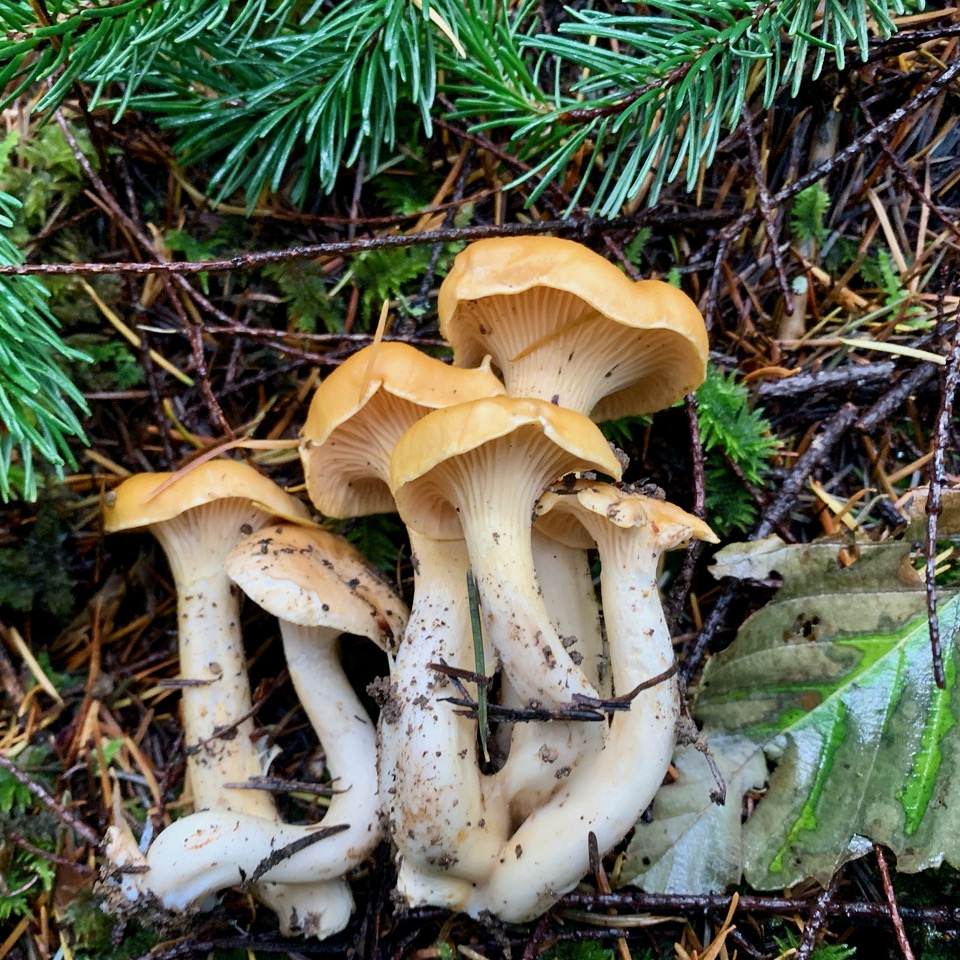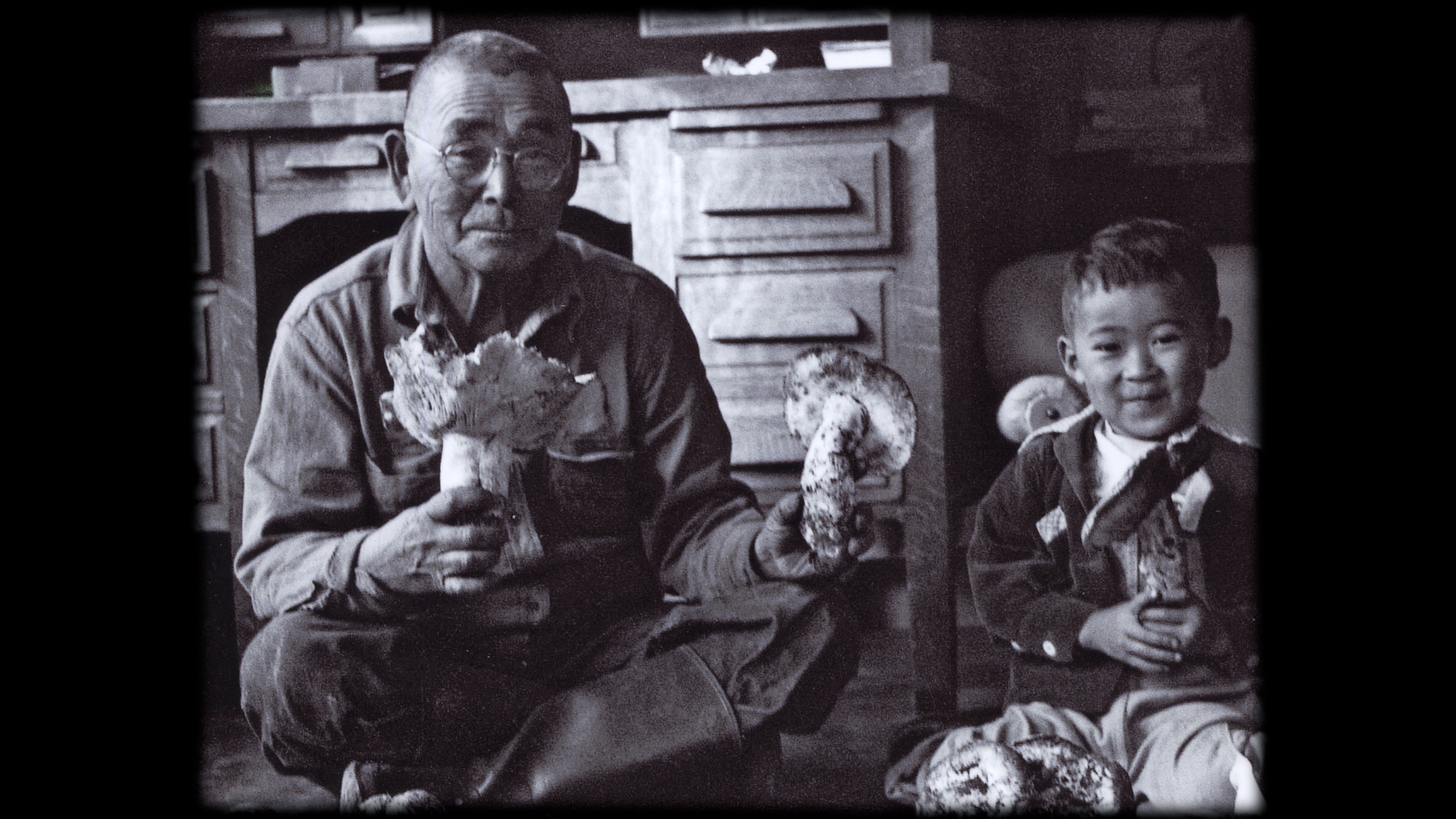Oregon’s Malheur National Forest is the home of an occurrence of Armillaria ostoyae, nicknamed the Humongous Fungus, believed to be the largest single living organism, by biomass, on earth. Located in the Reynolds Creek and Clear Creek areas of the forest about eleven miles east of Prairie City, the fungus covers 2,385 acres, about 3.7 square miles. It is one of five individual noncontiguous and genetically distinct occurrences of Armillaria ostoyae in that part of the forest, covering from 50 to 2,385 acres each.
It was in 1992 that biologist James Anderson and two colleagues discovered that an occurrence of a different species of Armillaria, Armillaria bulbosa, in a hardwood forest in northern Michigan comprised one organism covering 37 acres. Journalists in Michigan described it as a “humongous fungus.” That discovery set off a worldwide search for other instances of humongous fungus, leading eventually to the Oregon discovery.
More recent DNA research confirmed how the Armillaria is able to grow so large. Researchers in Hungary grew Armillaria ostoyae in a lab and pinpointed the genes that are responsible for creating its unique rhizomorphs, long black filaments of fungal tissue that grow under the soil to infest trees that the fungus feeds on. The researchers concluded that the rhizomorphs may have evolved from genes that are responsible for growing mushroom stems. The rhizomorphs grow into trees underground and parasitize and decay their root systems, eventually killing the tree. The fungus spreads slowly, only 0.7 to 3.3 feet a year, and creates mats of fungal matter called mycelium under the bark, girdling the tree. In this way, the fungus feeds on the living wood. It may take from twenty to fifty years for the fungus to kill a tree, and it continues to feed on the dead wood once the tree dies.
In 1988, Greg Whipple was the first Forest Service employee to investigate the Armillaria infestation in the Malheur National Forest, where the most common tree infested by the fungus is the grand fir. At first, the Humongous Fungus appeared to cover 400 acres, but additional genetic research determined that it was a single organism covering 2,385 acres. It is estimated to weigh as much as 35,000 tons and may be 8,650 years old.
Armillaria fruits in the fall, producing what are commonly known as honey mushrooms, which grow in clumps out of the base of infested trees. These are typical gilled brown mushrooms with stalks two to four inches tall and caps two to five inches across. They are considered to be edible, though they can cause stomach distress for some and need to be well cooked. They may be the only white-spored mushroom that grows in clumps on wood, and they should not be confused with solitary lookalikes growing out of the ground that could be toxic.
When not fruiting, the Humongous Fungus and other individual Armillaria in the Malheur National Forest are hidden underground and in the roots and under the bark of infested trees. It is possible, however, to identify the trees that have been parasitized. Long-dead trees lose branches and the bark sloughs off, and recently dead trees have red needles. A live infected tree may have rounded tops and resin exuding from its base.
Armillaria ostoyae is common in the Pacific Northwest but can also be found in Europe, Asia, and other parts of North America.
-
![]()
Humongous Fungus.
Courtesy Oregon Field Guide, OPB -
![]()
A map of the Humongous Fungus (in red), 2008.
Courtesy U.S. Forest Service -
![]()
Humongous Fungus.
Courtesy Oregon Field Guide, OPB -
![]()
A tree infected by the Armillaria mycelial in the Malheur National Forest.
Courtesy U.S. Forest Service
Related Entries
-
![Chanterelle Mushrooms]()
Chanterelle Mushrooms
Chanterelle mushroom refers to a group of mushrooms that usually have a…
-
![Malheur National Wildlife Refuge]()
Malheur National Wildlife Refuge
Malheur National Wildlife Refuge, established in 1908 by President Theo…
-
![Matsutake (mushroom)]()
Matsutake (mushroom)
On November 13, 1911, mycologist William Murrill collected a mushroom “…
Related Historical Records
Map This on the Oregon History WayFinder
The Oregon History Wayfinder is an interactive map that identifies significant places, people, and events in Oregon history.

